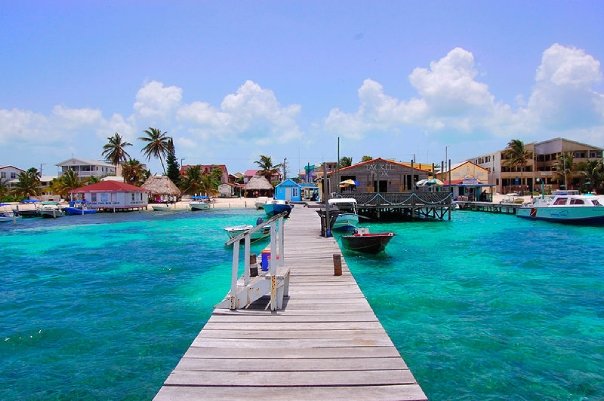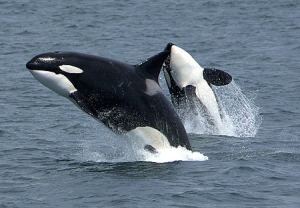The Killer Whale
Killer whales are characteristically marked with a black back, white chest and sides, and a white patch above and behind the eye. Calves are born with a yellowish tint that later fades to white. Killer whales have a heavy and tough body (tougher than other dolphins) and a large dorsal fin up to 6 feet tall. Behind the fin, they have a dark grey "saddle patch" across the back.
The Killer whale, locally referred to as the ocra or black fish is the largest species of the dolphin family. They are found in all of the world's oceans including Belize's. Killer whales have a diverse diet, although they often specialize in particular types of prey. Some feed exclusively on fish, while others hunt marine mammals such as sea lions, seals, and even large whales. Killer whales are regarded as top predators because they have no natural predators.
Researchers have identified five distinct killer whale types distinguished by geographical range, preferred prey and physical appearance. Killer whales are highly social, some populations are composed of family groups which are the most stable of any animal species.
Female killer whales become mature at around age 15. Their gestation period varies from 15 to 18 months. Mothers give birth to only a single offspring, about once every 5 years. Birth occurs at any time of year, with winter being the most popular.
Females breed until age 40, meaning that on average they raise five offspring. The calf is born tail first near the surface in warm waters. The newborn usually measures 6-8 feet in length and weighs about 400 pounds. The calf is nurtured with the mother's milk and stays close to its mother for about a year or a little longer.
The lifespan of females averages 50 years, with a maximum of 80–90 years. Males become sexually mature at the age of 15 but do not typically reproduce until age 21. Wild males live around 29 years on average, with a maximum of 50–60 years. More about Belize, become a fan of our face book page!!!







No comments:
Post a Comment